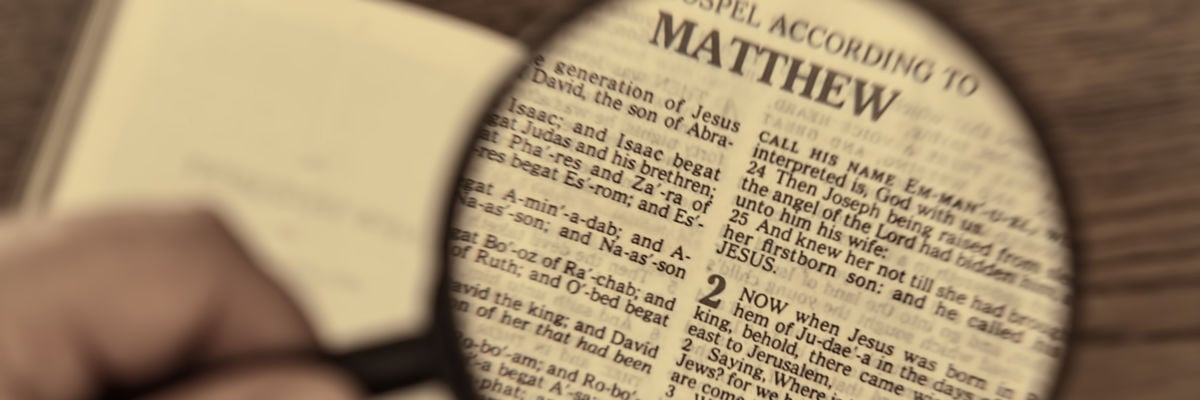
DAY 106
CHALLENGE
“Matthew’s genealogy of Jesus omits some generations and thus is wrong.”
DEFENSE
In Israelite genealogies, it was permitted to skip generations.
Hebrew and Aramaic don’t have terms for “grandfather,” “great-grandfather,” “grandson,” “great-grandson,” and so on. Any male ancestor was called a father (Hebrew, ’ab, Aramaic, ’ab, ’abba), and any male descendant was called a son (Hebrew, bēn, Aramaic, bar).
Thus, prophesying the birth of Jesus, Gabriel tells Mary, “The Lord God will give to him the throne of his father David” (Luke 1:32). David lived a millennium before Jesus, yet he is called Jesus’ father. Similarly, both Jesus and Joseph are called “son of David” (Matt. 1:20, 9:27). This made it possible to skip generations in genealogies, whether they ran forward (“Joram was the father of Uzziah”) or backward (“Uzziah was the son of Joram”).
Richard Bauckham notes:
That a family descended from one of the sons of David had at least an oral genealogy must be considered certain. This does not, of course, mean that it would be a complete genealogy. Oral genealogies, like many of those in the Old Testament, regularly omit generations, since their function is not to preserve the memory of every name in the list but to link the family with an important ancestor who gives it its place in the community ( Jude and the Relatives of Jesus in the Early Church, 341).
Matthew skips generations for literary purposes, grouping his genealogy in three sets of fourteen generations (Matt. 1:17). The reason may be to stress Jesus’ connection with David. In Hebrew and Aramaic, David (DVD) adds up to fourteen (D = 4, V = 6, D = 4).
Matthew would have expected his readers to recognize that the generations he skips are recorded in the Old Testament. In 1:8, he says Joram was the father of Uzziah (aka Azariah), but 1 Chronicles 3:11– 12 shows three generations between the two. The missing names are Ahaziah, Joash, and Amaziah. These three figures were kings of Israel. Their stories are told between 2 Chronicles 22 and 25.
When Matthew skips three Jewish kings in the line of David—well known to the audience from the Old Testament Scriptures—he expects his readers to recognize the literary device he is using in the genealogy.



